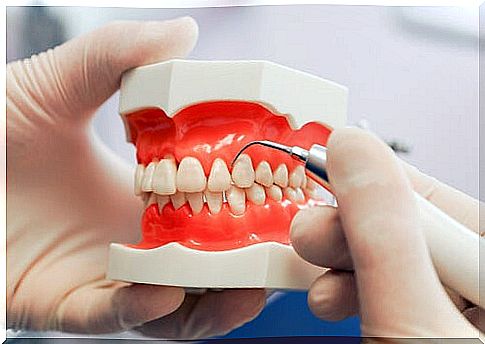A Bacteria Could Link Heart And Gum Disease
According to some research, cardiovascular and gum health could be related. This conclusion was reached due to the presence of the same bacteria in the gums and the heart.
The heart disease have increased dramatically in recent years and many of its risk factors are related to poor diet and physical inactivity.
However, it is possible that one of the triggers of these diseases is chronic gum conditions that, due to the effects of bacteria, could cause cardiovascular diseases.
The investigation…
The study in this regard was carried out by a research group at the University of Orebro, in Sweden, and was published by the journal Infection and Immunity .
According to this research, the activity of the bacterium Porphyromona gingivalis could alter some cells involved in arteriosclerosis and atherothrombosis, diseases that increase the risk of suffering a sudden heart attack.

The same bacteria is one of the main causes of periodontitis, a chronic infection of the gums that damages the soft tissue that surrounds the teeth and attacks the bone that supports them.
In previous studies, this bacterium had already been found within the plaque of the coronary artery, in patients who had a history of a heart attack.
Thanks to other studies in animals, it was shown that this bacterial mechanism can trigger and accelerate aortic arteriosclerosis.
Do you want to know more? Read: 7 delicious foods to take care of your heart
Importance of knowing periodontal diseases
Knowing which infections are due to Porphyromona gingivalis is a key aspect for taking preventive actions.
Periodontitis groups together the set of inflammatory conditions that compromise the tissues around the tooth. These are what fix it to the bone tissue that surrounds the dental roots.
It is a chronic and progressive infection, which gives rise to periodic outbreaks of destruction caused by bacteria. Genetic predisposition or poor oral hygiene habits can favor the growth of these bacteria.

Periodontitis evolves silently day by day and is usually not detected until a fairly advanced stage. Its early stages are characterized by the appearance of inflammatory symptoms, the clinical name of which is gingivitis.
Some signs to watch out for are:
- Redness and swelling of the gum.
- Gum bleeding when brushing your teeth.
- Soft pain.
If the infection is not controlled, the disease progresses to the second phase. Then the gum is detached from the teeth, forming periodontal pockets. The most visible symptoms are:
- The recession or shrinkage of the gums.
- Longer teeth sensation.
- Mobility of the teeth.
- Gap between teeth.
- Change in the way the teeth fit together when biting.
- Increased tooth sensitivity.
- Gum pain
- Appearance of abscesses.
- Bad breath.
Much of the periodontal diseases go unnoticed and can only be diagnosed through a dental exam. Therefore, it is advisable to visit the dentist regularly.
Can you reduce the risk?

Gum and heart disease also coincide in some risk factors that could explain their relationship. These include:
- The consumption of tobacco.
- Diabetes
- The obesity.
- Stress.
- Poorly controlled diabetes.
The risks of these diseases can be greatly reduced by adopting a healthy lifestyle.
Remember…
Hygiene plays a decisive role, since it is the most effective method to deal with bacteria. Therefore, it is very important to keep your mouth healthy: brush your teeth correctly, floss and mouthwash.
The dentist should be consulted at the slightest symptom, to detect the disease early and prevent it from getting worse.








